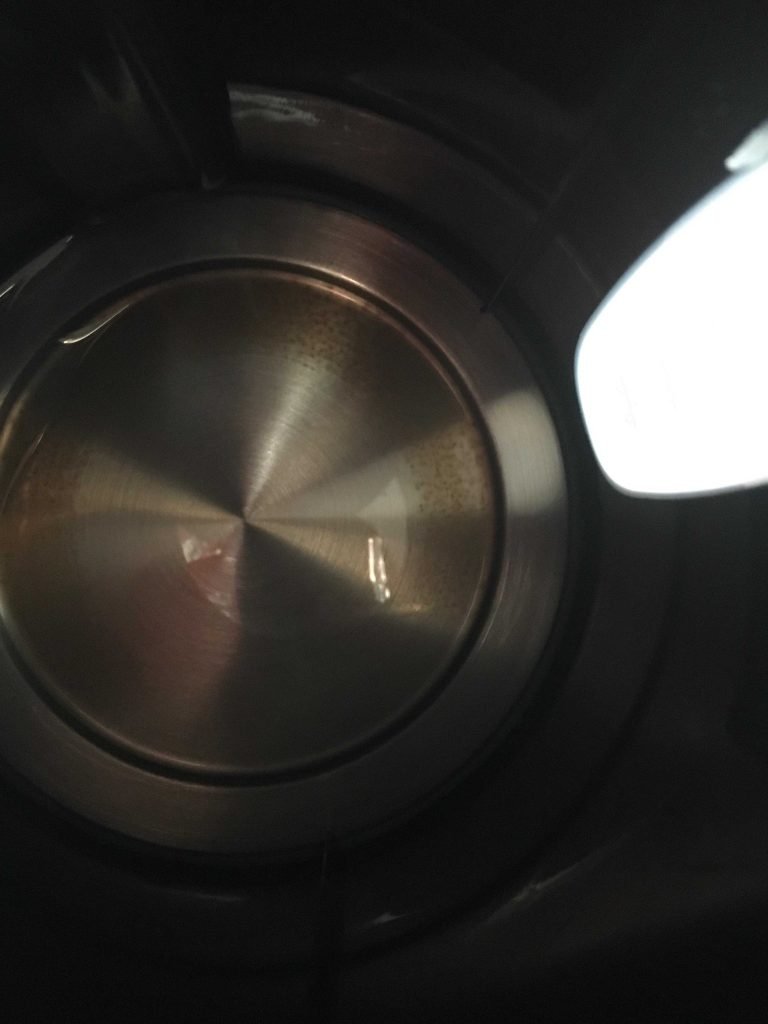To remove rust from your electric kettle, fill it with equal parts water and white vinegar, bring it to a boil, and let it sit for about an hour before scrubbing away the rust with a soft brush or sponge. Rinse thoroughly and boil clean water a few times to eliminate any vinegar traces. For stubborn rust, repeat the process or use baking soda paste for extra cleaning power.
Dealing with rust in your electric kettle can be frustrating, but with a few simple steps, you can restore it to its shiny, rust-free state. Rust often forms due to mineral deposits or prolonged exposure to moisture, and ignoring it can impact the taste of your water and the longevity of your appliance. Luckily, natural solutions like vinegar and baking soda can effectively loosen and remove rust without damaging your kettle. Regular cleaning and maintenance help prevent future rust buildup, ensuring your kettle stays in top shape for years to come. This guide will walk you through easy and safe methods to keep your electric kettle rust-free, saving you money and ensuring your hot beverages always taste their best.
How to Get Rust Out of Electric Kettle
Understanding Rust and Its Formation in Electric Kettles
Rust is a common problem that occurs when iron or steel reacts with moisture and oxygen. In electric kettles, rust usually appears on the inner heating element or the kettle’s metallic interior. It often looks like reddish-brown spots or flaky patches. Rust can develop over time if the kettle is exposed to excess moisture or water is left sitting inside for too long. Knowing how rust forms helps in preventing it and taking quick action to remove it.
Why Rust Is a Concern in Electric Kettles
Rust can affect the taste of water and may pose health risks if ingested in large amounts. It can also damage the kettle’s heating element, reducing its lifespan. Rust particles can break off and be swallowed during pouring, which is undesirable. Additionally, a rusty kettle looks unappealing and may indicate other issues like corrosion. Addressing rust early keeps your kettle safe, efficient, and looking good.
Tools and Materials Needed to Remove Rust
Before starting, gather the right tools and supplies for effective rust removal. These include:
- White vinegar or lemon juice
- Baking soda
- Soft cloths or sponges
- Non-abrasive scrub brush
- Water
- Plastic or wooden spatula
- Protective gloves (optional)
Using natural, non-abrasive cleaning agents helps avoid damaging the kettle’s surface.
Preparation for Rust Removal
Start by unplugging the kettle and emptying any remaining water. Let the kettle cool completely if it has been recently used. Carefully inspect the affected areas to identify where rust is present. Remove any loose debris or flaking rust with a soft cloth. This step helps in ensuring that cleaning efforts are targeted and effective.
Using Vinegar or Lemon Juice for Rust Removal
Vinegar and lemon juice are natural acids that break down rust. To use them:
- Pour equal parts white vinegar or lemon juice into the kettle until the affected areas are covered.
- Let the solution sit for 30 minutes to 1 hour.
- Use a soft cloth or sponge to gently scrub the rusted spots.
- Rinse thoroughly with clean water to remove any residue.
Repeat if necessary until the rust is gone. This process is safe, effective, and eco-friendly.
How Baking Soda Can Help Remove Rust
Baking soda is a gentle abrasive that can aid in rust removal without scratching your kettle. Follow these steps:
- Make a paste by mixing baking soda with a small amount of water.
- Apply the paste to rusty areas using a soft cloth or sponge.
- Allow it to sit for 15 to 20 minutes.
- Use a scrub brush to gently loosen the rust.
- Rinse with water and dry thoroughly.
Using baking soda together with vinegar enhances the cleaning power for stubborn rust spots.
Mechanical Removal Techniques
For tougher rust, mechanical removal might be necessary. Use these methods carefully:
Scrubbing with a Non-Abrasive Brush
Scrub the rusted spots gently with a soft-bristled brush or non-abrasive sponge. Avoid using steel wool or abrasive pads that can scratch the metal surface. Focus on loosening and removing rust flakes without damaging the underlying material.
Using a Plastic or Wooden Spatula
Gently scrape off loosened rust with a plastic or wooden spatula. Be cautious to avoid scratching or gouging the kettle’s surface. This step helps in removing stubborn rust residues that cleaning solutions may not fully eliminate.
Preventing Future Rust Formation
Prevention is better than cure. Follow these tips to keep your electric kettle rust-free:
- Always dry the kettle thoroughly after cleaning or use.
- Avoid leaving water in the kettle for long periods.
- Use filtered or soft water to reduce mineral deposits that promote rust.
- Regularly descale your kettle to prevent mineral buildup.
- Store the kettle in a dry environment away from humidity.
Taking these steps prolongs the lifespan of your kettle and minimizes rust formation.
Descaling and Maintenance Tips
Descaling helps remove mineral deposits that can accelerate rust development. Use a mixture of vinegar and water or dedicated descaling products. Boil the mixture in the kettle for about 15 minutes, then rinse thoroughly. Regular maintenance including cleaning and descaling keeps your kettle functioning smoothly and looking new.
When to Replace Your Electric Kettle
Despite diligent cleaning, rust might eventually cause irreversible damage. If rust becomes extensive, affecting the heating element or the kettle’s structure, replacement may be the safest option. If you notice persistent corrosion, strange odors, or frequent malfunctions, consider investing in a new kettle to ensure safety and performance.
Additional Tips for Rust-Free Electric Kettles
– Use distilled or filtered water to reduce mineral deposits.
– Avoid pouring water out onto surfaces where moisture can linger.
– Regularly check for signs of rust or corrosion.
– Clean your kettle at least once a month for optimal condition.
– Always follow the manufacturer’s cleaning instructions for your specific model.
These simple habits help keep your electric kettle in excellent shape and prevent rust from returning. Remember, prompt action and proper maintenance are key to enjoying clean, safe, and efficient boiling water every day.
How To Remove Rust From Water Boiler Kettle -Life Hacks
Frequently Asked Questions
What are effective natural methods to remove rust from an electric kettle?
Using natural solutions like white vinegar or lemon juice can effectively eliminate rust. Fill the kettle halfway with equal parts water and white vinegar or squeeze fresh lemon juice into it. Boil the mixture, then let it sit for 30 minutes to loosen rust. Afterward, scrub the interior gently with a soft brush or non-abrasive pad, rinse thoroughly with clean water, and boil plain water to remove any residual smell or taste.
How can I prevent rust from forming in my electric kettle?
To prevent rust buildup, ensure you dry your kettle completely after each use to avoid moisture accumulation. Regularly descale the kettle using a mixture of vinegar and water to remove mineral deposits that can promote rust. Use filtered or soft water instead of hard water, which contains minerals that accelerate rust formation. Avoid leaving water in the kettle for extended periods, and clean it regularly to maintain a clean, rust-free interior.
Are there any specific tools or products I should avoid when cleaning rust in my kettle?
Avoid using harsh abrasive materials like steel wool or metal brushes that can scratch the metal surface, creating more areas for rust to develop. Stay away from chemical rust removers not designed for kitchen appliances, as they might leave residues or damage the kettle’s interior. Instead, opt for gentle scrubbing tools and natural cleaners to preserve the kettle’s integrity and ensure safety.
What steps should I follow to safely remove stubborn rust inside my electric kettle?
Begin by filling the kettle with a mixture of equal parts white vinegar and water, then bring it to a boil. Turn off the kettle and let it sit for about an hour, allowing the vinegar to loosen the rust. After soaking, scrub the affected areas gently with a soft brush or sponge. Rinse thoroughly with clean water several times to remove any vinegar residue, then boil plain water to clear out any lingering smell before using the kettle again.
Is it safe to use commercial rust removers in my electric kettle?
It is generally safer to avoid commercial rust removers designed for industrial use because they can leave harmful residues that may contaminate water or pose health risks. Instead, stick to natural cleaning methods like vinegar, lemon juice, and proper maintenance routines. These options are effective, safe, and gentle on your kettle’s materials, ensuring safe operation and longevity.
Final Thoughts
To get rust out of electric kettle, start by filling it with a mixture of equal parts water and white vinegar. Let it sit for about an hour to loosen the rust.
Next, boil the mixture, then turn off the kettle and let it cool. Use a soft brush or cloth to scrub away any remaining rust flakes.
Rinse thoroughly with clean water to remove all residues. Repeat the process if necessary to ensure your kettle is rust-free and safe to use.
As an Amazon Associate, We earn from qualifying purchases. When you purchase a product through Amazon links on kitchenadvising.com, we may earn a small commission at no extra cost to you. This helps support the site and keep our content free.


